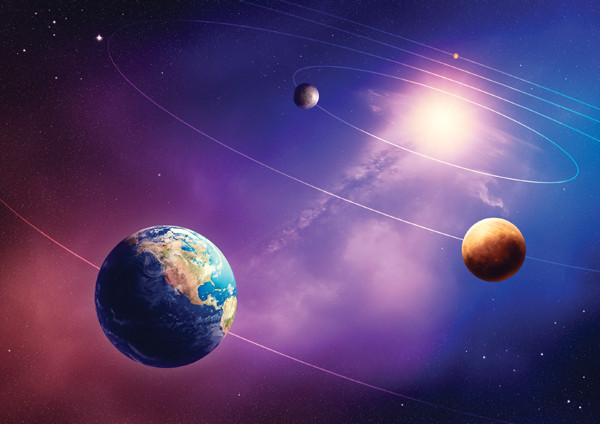
by Allison Mills Sunday, October 5, 2014

Mercury is iron rich and lacks a mantle, unlike its silicate-rich neighbors Venus and Earth. Credit: NASA.
The solar system was once as busy as a store parking lot on Black Friday. Collisions were common in the early days, and new evidence of a hit-and-run scenario may explain some of Mercury’s peculiarities.
The planet, like Earth’s moon, is iron rich and lacks a mantle — unlike silicate-rich Earth, Mars and Venus. How Mercury could have held onto its substantial volatile elements but not accreted a mantle has long been in question. The leading theory is that, like the moon, Mercury formed from a massive collision. But “a giant impact origin for Mercury is problematic,” wrote Erik Asphaug of Arizona State University and Andreas Reufer of the University of Bern in Switzerland in a new study published in Nature Geoscience. “Such a scenario requires that proto-Mercury was blasted apart with far greater [force] than required for lunar formation,” the authors wrote; the moon’s origins, iron core and mantleless body can be explained by a collision with proto-Earth.
According to Asphaug and Reufer’s visual modeling, Mercury could have bumped into one of the early planetary embryos that would later crash and build up other planets. Mercury couldn’t have formed from a head-on collision, the authors suggest, but a galactic fender-bender (or several) could have done the trick. This hit-and-run wouldn’t have been enough to destroy the proto-planet, but could have stripped Mercury of its mantle, leaving it enriched with iron. The authors suggest this process could apply to other metal-rich space bodies and could account for the wide variance in composition observed in some asteroids.
© 2008-2021. All rights reserved. Any copying, redistribution or retransmission of any of the contents of this service without the expressed written permission of the American Geosciences Institute is expressly prohibited. Click here for all copyright requests.